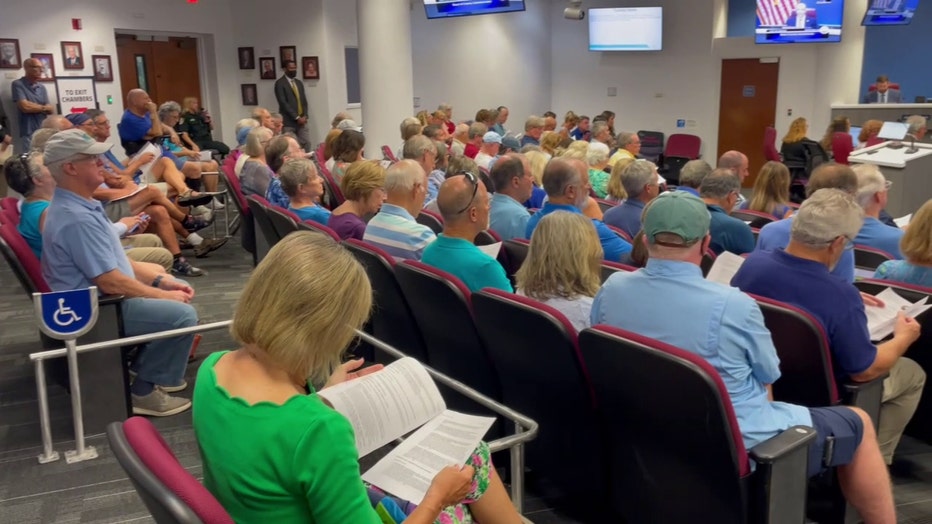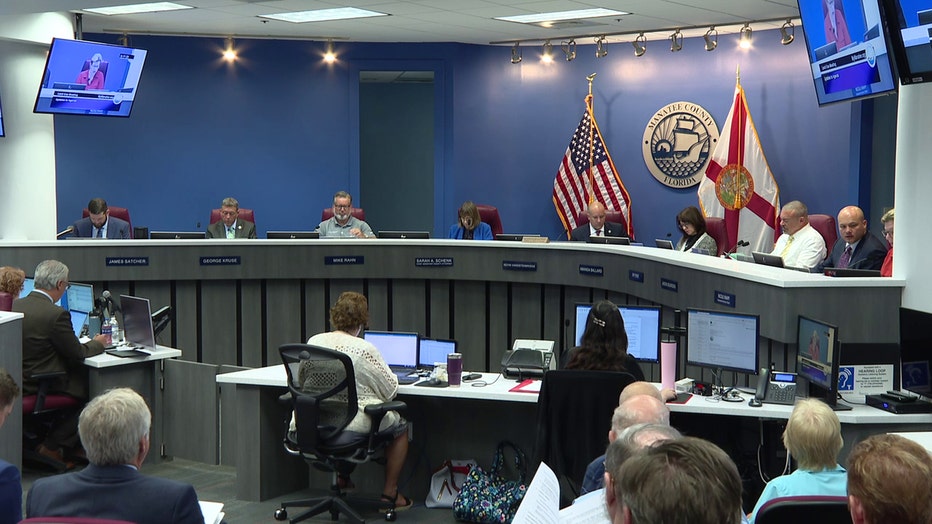Manatee commissioners move closer to ending wetland protections despite resident pushback

Manatee County looking to end wetland protections
Among Manatee County residents expressing concerns over wetlands protections, Rob Brown spoke from experience.
BRADENTON, Fla. - Wetlands provide a peaceful setting to Florida, but they also work to filter waterways and help protect local communities. However, Manatee County is moving closer to moving wetland protections within the county.
Many residents, scientists and former staff are asking them to reconsider.
Among Manatee County residents expressing concerns over wetlands protections was Rob Brown, who spoke from experience.
READ: North Port adds natural resources division aimed at protecting green space from development
"There’s some unintended consequences of what’s being proposed here," he told commissioners on Thursday.
Brown retired as the environmental program manager for Manatee County after 34 years. He stood before commissioners before, and he hoped they would listen.

"I was here when the comp plan was initially adopted. There were science behind these all of those decisions, going forward," he said.
Brown now spoke for Manatee Fish and Game Association. He spoke out against removing the 30 to 50-foot buffers that protect wetlands from development.
MORE: Higher water temperatures causing fish kills along Palma Sola Causeway, Little Sarasota Bay
"We were given the ability to enhance our ability to protect these areas and the ecosystem that supported these areas," said Brown.
Removing the local protection would leave a much smaller 15-foot buffer, required by the state. A majority of county commissioners favor the smaller buffer, and they said the county’s larger buffer is government overreach.
"The ownness is and should be on the government to show a private property owners data and science as to why that property must lose their entitlements," said Manatee Commission Chair Kevin Van Ostenbridge.

Environmental experts said the larger buffers create better water quality and healthy habitats for plants and animals. Surrounding counties have implemented their own expanded buffers.
Sarasota County:
- Wetland Delineation – recommend contacting the State (for binding jurisdictional determination)
- Wetland Mitigation – recommend contacting the State.
- Wetland Buffers/Additional Requirements – 30’ buffer, utilize land use controls to preserve wetlands
The minimum buffer width is 30 feet; however, buffers consisting of mesic hammocks shall be a minimum of 50 feet wide consistent with Mesic Hammock Management Guideline. Wetlands along the Myakka River are protected by the Myakka River Protection Code, which may result in a buffer as wide as 220 feet.
Pinellas County:
Pinellas County has codes in place to protect wetlands, floodplains and other preservation areas.
There is no development allowed within isolated wetlands, floodways and environmentally sensitive areas that are designated preservation areas on the future land use map.
The wetland buffer size varies based on the type of adjacent feature, usually between 15 and 50 feet. For example, the minimum required wetland buffer adjacent to an isolated wetland is 15 feet.
Hillsborough County:
- A minimum of 30 feet for Conservation Areas.
- A minimum of 50 feet for Preservation Areas.
"These amendments do not cause impacts to wetlands," said Daniel Delisi, a consultant hired by the county.

Delisi, who recommended the changes, is the same consultant who had previously worked for developers who tried to force the changes through legal action, but failed.
In Manatee County, the added protection could soon disappear. So far, only one commissioner George Kruse has voted against the idea.
"Cutting this on a one-off basis is just showing everyone you’re not doing this for the best interest of the comp plan. You’re not doing this for the best interest of the community. You’re doing this for your own personal best interest, whatever that maybe," he said.
The state is currently reviewing the county’s proposal. If approved by the state, it would then face a final vote from the county commission.

